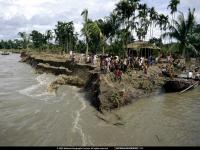NSF and USAID Jointly Launch International, Interagency PEER Program to Advance Science Collaboration With the Developing World
July 7, 2011
The National Science Foundation (NSF) and the United States Agency for International Development (USAID) have launched an international joint initiative to address global development challenges.
PEER, "Partnerships for Enhanced Engagement in Research," capitalizes on competitively-awarded investments to support and build scientific and technical capacity in the developing world.
NSF Director Subra Suresh, USAID Administrator Rajiv Shah and White House Office of Science and Technology Policy Director John P. Holdren spoke at an event held at the National Science Foundation this morning to celebrate this innovative partnership and to roll out the PEER program.
"I am delighted to see these two agencies collaborating to further President Obama's goals of strengthening America's science and technology enterprise and applying its outputs to challenges both domestic and global," said Holdren, assistant to President Obama for science and technology. "This partnership will help particularly with the application of science, technology and innovation to accelerate global development, with huge benefits for industrialized and developing countries alike."
"This is a win-win partnership," said NSF Director Subra Suresh, "The U.S. scientific community benefits from more robust international partnerships and an increased awareness of how research can be used to address global development challenges. Our foreign partners benefit from the expertise and enthusiasm of the U.S. scientific community, the engagement of U.S. universities, and an understanding that science can build bridges."
Six USAID-funded pilot projects through PEER explore research challenges related to ecosystems, climate change, seismology, hydrology and biodiversity in Tanzania, Bagladesh, Mali, Kenya and Burkina Faso and are linked with NSF investments.
The principal investigators of one project--Michael Steckler from Columbia University and his international collaborator Syed Humayun Akhter from the University of Dhaka in Bangladesh--attended the program launch and described their project, which explores life on a tectonically-active delta employing a convergence of earth science and geohazard research.
PEER will employ a merit review process similar to the one used to evaluate proposals by NSF when it chooses among proposals to fund extraordinary science and engineering. USAID announced that it has selected the National Academy of Sciences to administer the PEER program and has allocated $7 million for the initiative. This will be strategically coupled with merit-reviewed, NSF-funded research at U.S. institutions to address challenges at the interface of water, renewable energy, food security, climate change and disaster mitigation with an expected leveraging of $25 to $50 million.
"We're trying to actually change the way people think about what development is, what it could be and how we can create the kinds of solutions that inspire others to care and to address the needs of the billions of people who live without the benefits of two centuries of science and technology," said Shah. "And with the success and lessons learned from our six pilot projects, and the strength and expertise of those assembled here today, one can be sure, we're well on our way."







